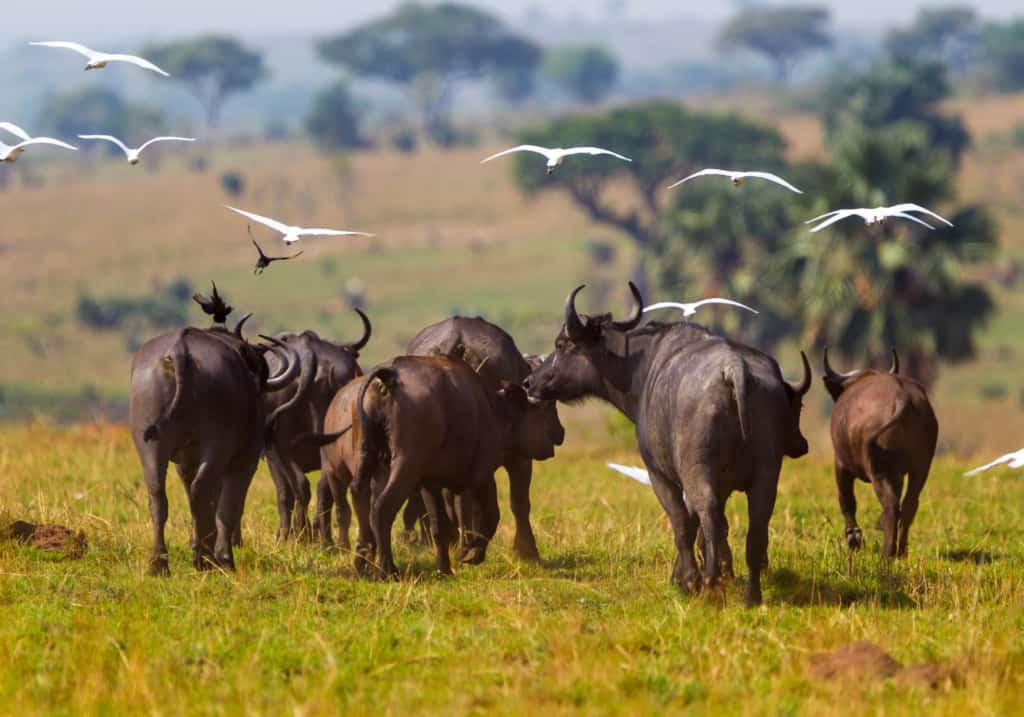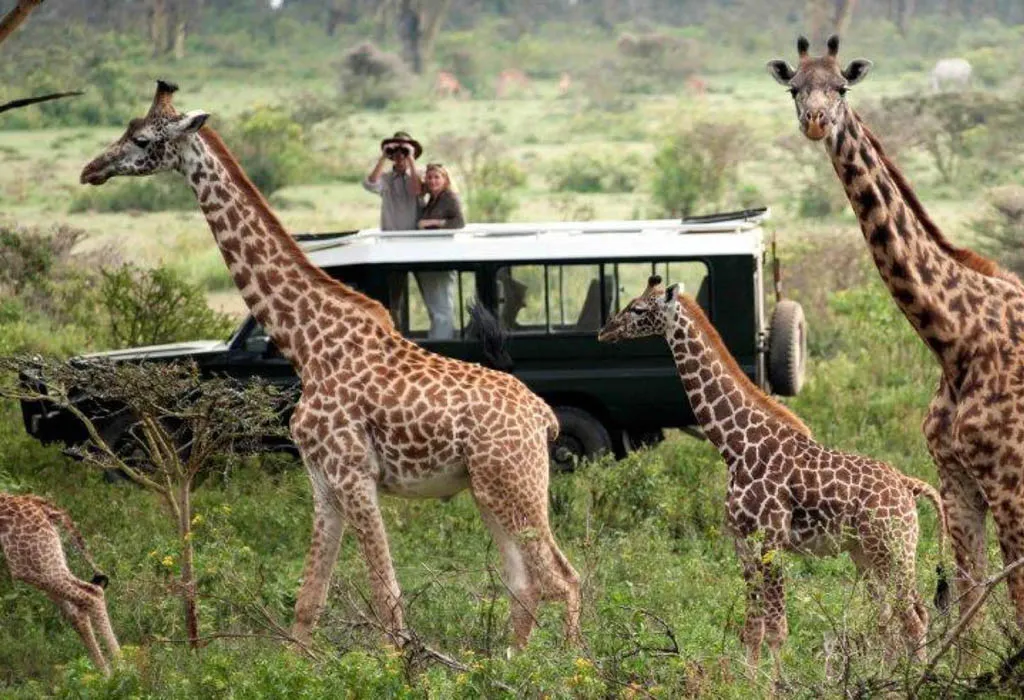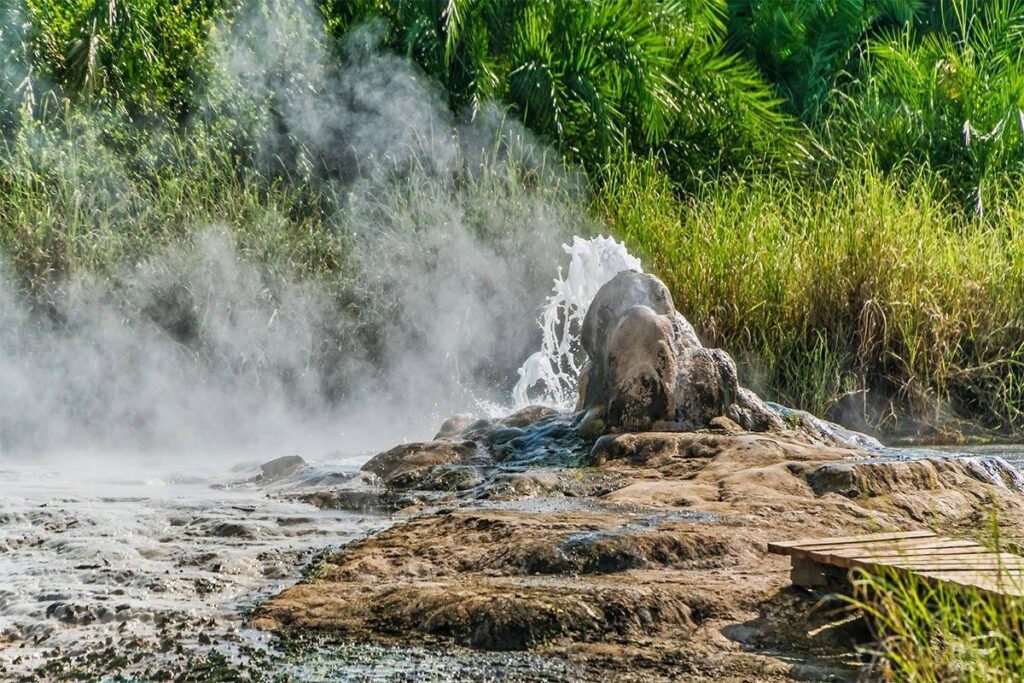Travel Guide to Toro Semliki Wildlife Reserve in Uganda
A Travel Guide to Uganda‘s Toro Semliki Wildlife Reserve: The majority of visitors to western Uganda‘s Toro-Semliki Wildlife Reserve are birdwatchers. With a number of birding specialties, the reserve’s checklist is impressive. The Rift Valley escarpment to the east, the Congolese Blue Mountains to the west, and the Rwenzoris to the southwest are the boundaries of the Albertine Rift Valley reserve.
The main vegetation types are savannah and woodland, with several rivers flowing through. The area is encircled by riverine forest and has sporadic borassus palm patches. Sempaya’s hot springs and a Pygmy village in the neighboring Semliki National Park, where the only resort provides a very special wilderness experience with guided activities, are additional attractions.

Why go to the Wildlife Reserve of Toro Semliki?
Safari Game Drive in Toro Semliki Wildlife Reserve
In Uganda‘s Toro Semliki Wildlife Reserve, game drives offer a great opportunity to get up close and personal with chimpanzees, red-tailed monkeys, buffaloes, lions, and other creatures. Occasionally, throughout the day, visitors can spot leopards and shy bush babies. On nature excursions across the reserve, visitors can encounter a variety of ecosystems, such as riverine forests and savannah woodland.
Several nocturnal animals, such the white-tailed mongoose, can be spotted after dark, while visitors can enjoy a feast of savanna and rainforests in the morning. The Eastern escarpment of the Great Rift Valley contributes to the region’s diverse ecosystem and stunning surroundings.
The Toro Semliki Wildlife Reserve’s fauna
There aren’t many species of wildlife in the park. The only one that is widely available is the Uganda kob. All wildlife is cautious and challenging for cars to approach. Although they are around, lions and hyenas are rarely seen; they are far more common to hear at night.
Buffalo and elephants are rarely seen. On night drives, leopards can sometimes be seen, but lions are usually heard rather than seen. The park is home to numerous ape species, including chimps, however encounters are few.
Grey-cheeked mangabey, black-and-white colobus, Central African red colobus, baboon, blue monkey, red-tailed monkey, de Brazza’s monkey, vervet monkey, and Dent’s mona monkey can all be seen along the woodland walks.
Birds
The Toro-Semliki Wildlife Reserve in Uganda is a birder’s paradise, although it may not be the best site to watch wildlife. There are roughly 460 species known to exist in different habitats. A breeding colony of the spectacular red-throated bee-eater and the elusive shoebill can be seen on Lake Albert boat cruises.
A great opportunity to include different Congolese rainforest species is offered by the neighboring Semuliki National Park. There are migrating birds from November to April. Among the bird species are the Arrow-marked Babbler, Tropical Boubal, Black-headed Bushrike, Luhdrers Bushrike, Red-necked Falcon, Black-billed Barbet, and the Ground Hornbill, which resembles a turkey.

Trees
The forest-grassland mosaic known as Toro-Semliki features a variety of plant and ecological zones. Within the reserve, there are 50–250 m wide stretches of gallery forests that are 30–50 m tall and supported by the Wasa and Mugiri rivers and their many tributaries. The most common main canopy riverine tree species is the Ugandan ironwood, which is followed by Kigelia africana and Millettia dura.
The most prevalent tree in riverine woodlands, Beilschmiedia ugandensis, dominates the understory. Tree size diminishes as visitors move farther from water sources, occasionally transitioning gradually to open-habitat species like bushy plants, Acacia, and Albizia, but more often than not, the change from forest to grassland occurs suddenly.
Additional pursuits at the Toro Semliki Wildlife Reserve
The following are other Ugandan vacation activities that guests visiting Toro Semliki Wildlife Reserve might anticipate:
birdwatching: Although Toro Semliki Wildlife Reserve offers amazing birdwatching throughout the year, it peaks in March, immediately following the comparatively dry winter months of December through February.
The energy, strength, and hotness of the Sempaya hot springs—which can reach temperatures of up to 100 degrees Celsius (212 degrees Fahrenheit)—showcase the might of the underlying geographical forces.
A Travel Guide to Uganda‘s Toro Semliki Wildlife Reserve
The Pygmy community at Semuliki National Park’s Sempaya Hot Springs: Learn about the distinctive customs, culture, and way of life of the Pygmy people, who have been hunters and gatherers for years in a deep forest that is a part of the vast Ituri Forest that extends into the Democratic Republic of the Congo.
Hiking to Nyaburogo canyon: Take the 7km Nyabugogo Gorge trail, which leads through a range of canyon environments, such as grassy grassland and open acacia-combretum woodland. Primate hikes into the palm forest are also possible.
How is Toro Semliki Wildlife Reserve accessible?
By Air
Entebbe International Airport (EBB) is where the majority of visitors to Uganda come by plane, thus visitors should be aware of the most updated Uganda visa requirements. It is also possible to take a scheduled or chartered flight from Entebbe International Airport (EBB) or Kajjansi Airfield in Kampala to the airfield. As part of your safari package, your tour operator will often set up airport pickup and any required transportation.
By Road
Fort Portal, the closest community to Kibale National Park, is about an hour’s drive from Uganda‘s Toro-Semliki Wildlife Reserve. Kampala is about 180 miles (300 kilometers) away from the reserve. Six to eight hours are needed for the direct trip. It is advised to have a little amount of local currency (UGX) on hand for minor transactions.

The Toro Semliki Wildlife Reserve’s climate and weather.
Toro-Semliki Wildlife Reserve has a hot climate. It is anticipated that these high temperatures would persist throughout the year. Around 30°C (86°F) is the average daytime temperature, while 18°C (64°F) is the average nightly temperature. Rainfall is erratic in Toro-Semliki because there isn’t a true dry season. Nonetheless, there are two distinct wet seasons: August through November and March through May.
The ideal time to go
Knowing the best time to visit Uganda is essential because it influences availability, airfare, accommodations, and the weather that visitors can anticipate on their safari vacation. The best time to visit Toro-Semliki Wildlife Reserve is during the dry season. The two dry seasons are December through February and June through July. The roads become almost impassable and there are significant restrictions on animal watching drives during the Wet Season (March to May and August to November).
How much does it cost to enter the Toro-Semliki Wildlife Reserve?
Adult visitors from other countries must pay USD $35 to enter Toro-Semliki Wildlife Reserve. It is free to drive or walk along the main road to Bundibugyo, which is located just past the southeast boundary of the park.
Accommodations at the Wildlife Reserve of Toro-Semliki
There are several lodging options available to visitors to Toro-Semliki Wildlife Reserve, ranging from opulent safari lodges to affordable camping.
Lodges
On clear days, the breathtaking Great Rift Valley in east Africa, the Rwenzori Mountains, the Toro-Semliki Wildlife Reserve, the Congo‘s Blue Mountains, and the shores of Lake Albert are all visible from Aramaga Rift Valley Lodge. Beautiful private pods with 180-degree viewing glasses are part of the accommodations, ensuring guests don’t miss anything. The six space-themed pods—Moonshot, Starship, Galactic, Orbit, Supernova, and Gravity—were designed to take use of the breathtaking views and organic contours of the surroundings in order to offer exclusive experiences with a laid-back take on luxury.
The Semliki Safari Lodge, a luxurious safari lodge that ensures guests total privacy and isolation while exploring the reserve’s diverse habitats—which include wetlands, Lake Albert, tropical rainforest, and expansive grassland plains—is an excellent choice.
Only 16 guests can be accommodated in the eight opulent safari tents with private bathrooms at this charming resort. Each is elegantly furnished, guaranteeing privacy and breathtaking views of the Rift Valley. Additionally, there is a tranquil swimming pool and a sizable sitting area composed entirely of natural materials like wood, stone, and thatch.
Going camping
The Uganda Wildlife Authority (UWA) runs affordable bandas (huts) and a campground along the shores of Lake Albert Ntoroko. Additionally, guests can lodge at the Ntoroko landing site, the headquarters in Karugutu, the Ntoroko Game Lodge, or Semliki Safari Lodge.
The headquarters of the Semliki Wildlife Reserve are at Karugutu, Ntoroko District, which is situated in Uganda‘s Western Region. Visits to Murchison Falls National Park and Bwindi Impenetrable Forest National Park can be combined with park tours.
In conclusion, the reserve is occasionally confused with the 10 km southwest Semuliki National Park. The oversight is regrettable because, despite their close proximity, the habitats are very different; Semuliki National Park is primarily a rainforest, whereas Uganda‘s Toro Semliki Wildlife Reserve is primarily grassland.



